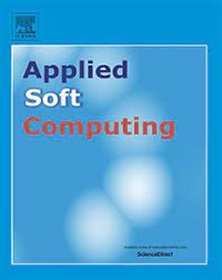Transcending modularity: A memetic algorithm combining triangle motif and edge information for community detection
IF 7.2
1区 计算机科学
Q1 COMPUTER SCIENCE, ARTIFICIAL INTELLIGENCE
引用次数: 0
Abstract
The research towards community detection plays a crucial role in revealing the topological structure and functional characteristics of complex networks. Nowadays, modularity and its variants are the most popular community quality evaluation metric applied in the detection of community structures. However, these modularity-based methods rarely consider higher-order structural information such as motifs in a network, which may lead to an incomplete and inaccurate understanding of the network. While some motif-based methods have been proposed, they suffer from resolution limitations and completely ignore lower-order structures. To bridge this gap and address community detection problem from a more hybrid view focusing on both lower-order and higher-order structures, this paper first proposes an adaptive hybrid-order modularity optimization function termed as TE-Modularity, which harmonizes triangle motif and edge information. It transcends traditional modularity by considering both lower-order and higher-order structures and can be applicable to all types of networks. In addition, we design a memetic algorithm called TE-MA, that uses TE-Modularity as the objective function to solve the community detection problem. A novel mutation operator based on triangle motifs is proposed, which can effectively accelerate the convergence of the proposed algorithm. Furthermore, we develop a new multipoint local search strategy, striking a good balance between the efficiency and quality of the algorithm. Through experiments conducted on different optimizers and comparisons with several state-of-the-art community detection methods, our approach's effectiveness and superiority are demonstrated on both real and synthetic networks.
超越模块化:一种结合三角形基序和边缘信息的模因算法
社区检测的研究对于揭示复杂网络的拓扑结构和功能特征具有至关重要的作用。模块化及其变体是目前应用于社区结构检测的最常用的社区质量评价指标。然而,这些基于模块化的方法很少考虑高阶结构信息,如网络中的基序,这可能导致对网络的不完整和不准确的理解。虽然已经提出了一些基于基序的方法,但它们受到分辨率的限制,并且完全忽略了低阶结构。为了弥合这一差距,并从更混合的角度解决社区检测问题,同时关注低阶和高阶结构,本文首先提出了一种称为TE-Modularity的自适应混合阶模块化优化函数,该函数协调三角形motif和边缘信息。它超越了传统的模块化,同时考虑了低阶和高阶结构,可以适用于所有类型的网络。此外,我们设计了一种模因算法TE-MA,以te -模块化为目标函数来解决社区检测问题。提出了一种基于三角形基元的变异算子,有效地加快了算法的收敛速度。此外,我们开发了一种新的多点局部搜索策略,在算法的效率和质量之间取得了很好的平衡。通过在不同的优化器上进行的实验以及与几种最先进的社区检测方法的比较,我们的方法在真实和合成网络上都证明了它的有效性和优越性。
本文章由计算机程序翻译,如有差异,请以英文原文为准。
求助全文
约1分钟内获得全文
求助全文
来源期刊

Applied Soft Computing
工程技术-计算机:跨学科应用
CiteScore
15.80
自引率
6.90%
发文量
874
审稿时长
10.9 months
期刊介绍:
Applied Soft Computing is an international journal promoting an integrated view of soft computing to solve real life problems.The focus is to publish the highest quality research in application and convergence of the areas of Fuzzy Logic, Neural Networks, Evolutionary Computing, Rough Sets and other similar techniques to address real world complexities.
Applied Soft Computing is a rolling publication: articles are published as soon as the editor-in-chief has accepted them. Therefore, the web site will continuously be updated with new articles and the publication time will be short.
 求助内容:
求助内容: 应助结果提醒方式:
应助结果提醒方式:


